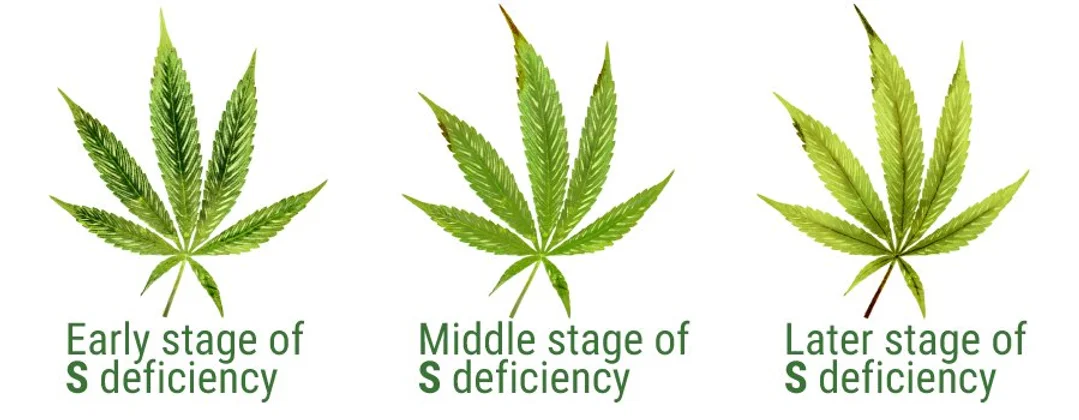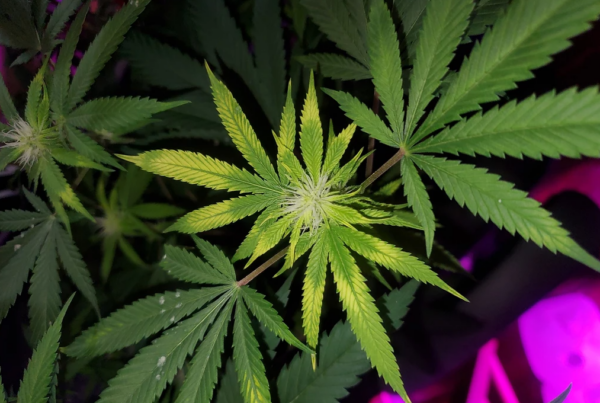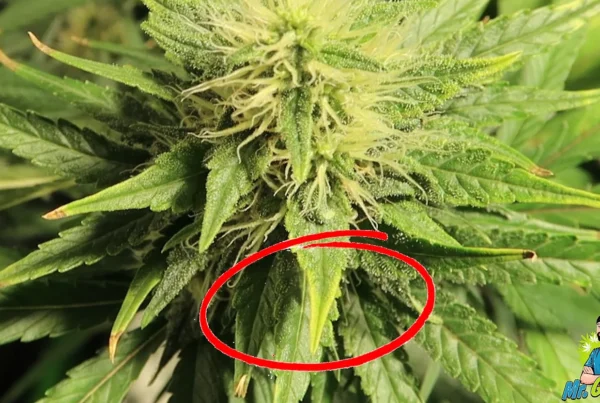As a cannabis grower, noticing something wrong with the leaves or stems can be a cause for great concern. Some deficiencies in cannabis plants manifest themselves in the newest growth first. One of these deficiencies that appear in new growth first is sulfur deficiency. But don’t panic, you will be surprised to know that it is easy to identify and fix. This article will provide you with tried and tested tips and tricks that are guaranteed to set your cannabis plant on the path to recovery – fast!
Role of Sulfur in Cannabis Plants
Before you jump into the symptoms and treatments of sulfur deficiency, it is important to know the role of this element in plant functions. Sulfur is required for the formation of enzymes that create protein in cannabis plants and also for the metabolism of nitrogen. It is a secondary nutrient and acts as a catalyst for photosynthesis. It is also required for chlorophyll formation, the pigment that gives the plants their green color. Sulfur is essential for many primary functions in plants and its deficiency can greatly affect overall plant health.

Symptoms of Sulfur Deficiency in Cannabis Plants
Since sulfur is required in chlorophyll production, a strong indicator of sulfur deficiency is the yellowing of leaves or chlorosis. Since sulfur is immobile in plants, this symptom first appears in new leaves. Usually, in the case of sulfur deficiency, the yellowing starts at the base of the leaves and works its way towards the tip. If a cannabis plant is deficient in sulfur, you may also notice interveinal chlorosis or yellowing between the veins of the leaves. Purple or pinkish streaks on the stem is also an indicator of this problem. You may also notice pink, orange, or a red color on the underside of the plant’s leaves. The effects of this deficiency also impact the plant in the flowering stage. The buds on the plant shrink and die off as a result of sulfur deficiency and that is why it is important to fix it – to get a great yield.
It is not uncommon for growers to mix sulfur deficiency with nitrogen deficiency, but the latter starts in the old-growth or bottom of the plant. Growers soon realize that treating for nitrogen deficiency is not fixing the problem. Here is a checklist of symptoms that you can use to accurately diagnose sulfur deficiency in cannabis plants:
- Chlorosis or yellowing of leaves (starting from new growth)
- Interveinal chlorosis or yellowing between leaf veins
- Purple or pinkish streaks on stems
- Fragile and woody stems
- Buds dying off in flowering stage
- Yellowing starting at the base of the leaves and progressing towards tips
- Discoloration of the underside of the leaves (pink or orange tinge)
If when using this list of symptoms you identify that your cannabis plant is indeed deficient in sulfur, don’t worry too much as this problem is easy to fix.

Sulfur Deficiency Treatment for Cannabis Plants
Sulfur deficiency is not a very common problem and usually occurs when sulfur is locked out. You can fix this issue with a two-step process. The first step involves restoring the pH level and the second step required is adding sulfur.
First, you must ensure that your plant does not have a sulfur lockout and the pH level is adequate for the cannabis plant to uptake sulfur. Here is the pH range required for optimal absorption of sulfur:
- In soil, a pH range of 6.0 to 6.5 is recommended
- In a soilless medium or a hydroponic system, a pH range of 5.5 to 6.5 is recommended
To restore the pH level, flush your system with pH-balanced water and then give a 1/2 or 1/4 dose of cannabis-friendly nutrients. Once the pH level is corrected, the plant will start recovering. If you are growing in soil, drying the soil out a bit first is suggested – but do not let it get bone dry. The next step is to wait for the plant to show improvement. Alternatively, you can add sulfur to the system using the following methods:
- Epsom Salt: Epsom salt (magnesium sulfate) is known to increase sulfur levels in both soil and hydro mediums. Add around one half to two teaspoons of Epsom salt to a gallon of water, stir until the salt is dissolved, and then spray your cannabis plant with the solution. You can also warm the water slightly to improve the solubility of the salt.
- Other Sulfates: Potassium sulfate contains 18% sulfur and can increase the sulfur level. Ammonium sulfate can also be used for this purpose as it contains 24% sulfur. Some growers may go for calcium sulfate (gypsum) since it contains around 18% sulfur, but gypsum is not the most suitable choice as it can be toxic for the plant if the pH is below 5.5.
- Manure or Organic Matter: Sulfur is naturally present in the soil in organic matter. Mushroom manure is a great and effective way to bring the sulfur level up in the soil. Manure from animals works too and is another organic way to fix the issue. Since sulfur is absorbed by the plant in the form of sulfate, which results from the breakdown of organic matter, starting with well-rotted manure will help. This solution can help a lot with outdoor plants.
Sulfur is an immobile nutrient and you will not see any improvements immediately after the treatment. It takes around a week to see the results so it is important to stay patient. The above treatments will help your plant recover and become healthy. You will also be back on track to get the dense buds and optimal yield that you are hoping for. To prevent this problem in the future, use a fertilizer that has sulfur in it and monitor the medium’s pH to ensure it is in the proper range for sulfur uptake. This proactive approach will help save the time and money required to correct the problem. Taking the right approach will help keep your plants healthy and thriving.
![]()










